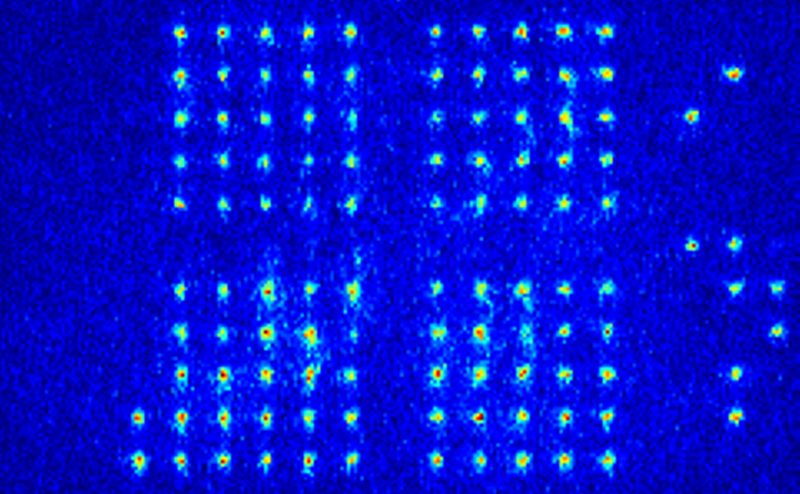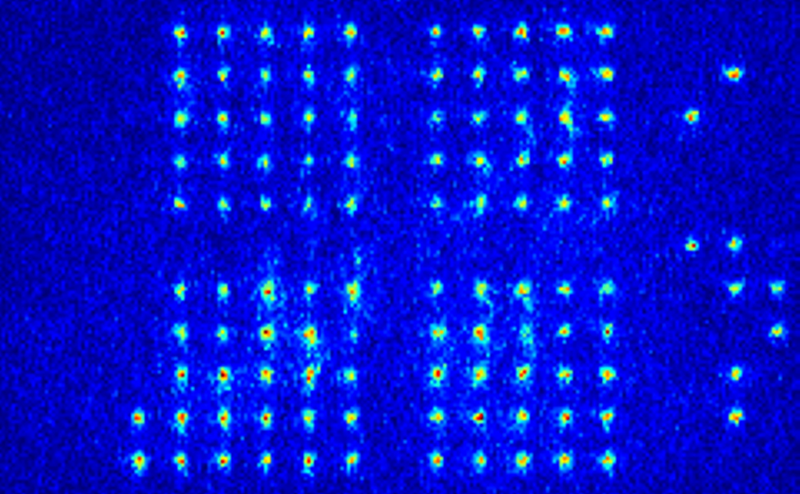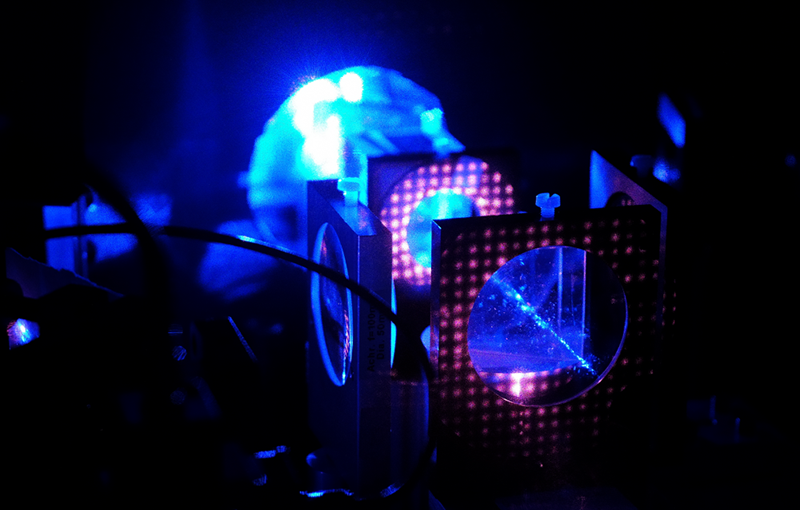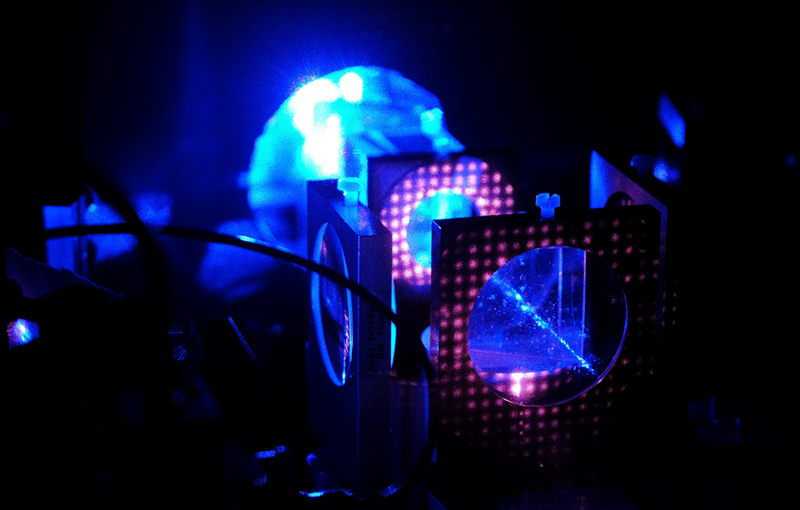Sensing Magnetic Fields with an Array of Single Atoms
Two-dimensional arrays of ultracold atoms are potential candidates for quantum memories and quantum computers, but they could also be used as sensors for detecting magnetic fields and other fields. Recently, a team at the Technical University Darmstadt in Germany has demonstrated for the first time an atom-array magnetometer, whose spatial resolution outperforms that of classical devices [1]. The result was presented last month by team leader Gerhard Birkl at the Atomtronics Conference in Spain.
Atomtronics is an emerging field in physics that aims at using atoms in analogy to electrons in traditional electronics. The term strictly refers to circuits in which atoms flow along laser-defined paths, but it is often extended to other technologies that imply the manipulation of atoms with light. The experimental setup for this new study is indeed one based on laser cooling and laser trapping. “We are able to cool and arrange single rubidium atoms in two-dimensional arrays by using light,” explains Birkl. The advantage of these widely adopted techniques—which were recognized with the Nobel Prize in Physics in 1997—is that they don’t require a complex cryogenic system, as other quantum technologies do.
In their lab, Birkl and colleagues trap rubidium atoms in a square-shaped array with a width of 0.2 mm. By means of an additional laser, which acts as an optical tweezer, they can move each atom from one position to another. “We can create any pattern of atoms we want,” Birkl emphasizes. So far, they have managed to place about 1300 atoms in their array at several microns of distance between each other. However, the design could be scaled up to 1 million atoms or more, according to Birkl.
This system can be used as a quantum memory, as each atom can be in one of two internal states, corresponding to the two possible states of a qubit. The system can also perform quantum computations by exciting the atoms into so-called Rydberg states that allow interactions between them to occur. In the work presented in Spain, however, Birkl and his colleagues explored another direction: quantum sensing. The idea is to expose the system to a test magnetic field, which is static in time but varies spatially. The system can probe these variations, as each atom of the array acts as a separate sensor. “It’s like having a CCD camera for magnetic fields,” Birkl comments. The pixel size of this camera is 7 µm, as this is the distance between atoms in the array.
To operate the system, the researchers started with all the atoms in their ground state. Then they switched on the magnetic field. The presence of this external field made the two energy levels of the ground state of the atoms split into 12 different levels. The size of this energy splitting depends on the strength of the magnetic field and can be probed by high-resolution spectroscopy, with a measurement process similar to the way atomic clocks operate.
In this way, the team could measure field changes with micrometer resolution and a precision of 100 nanotesla. They estimate that the smallest detectable field is 25 microtesla per second of measurement time, which roughly corresponds to Earth’s magnetic field. This sensitivity is modest, but Birkl says that the scheme is still in its early development stages. By optimizing the parameters of the experiment, the researchers are confident that they can improve the sensitivity to 1 picotesla per second of measurement time. Such an optimized device could be used to map out magnetic fields around certain high-temperature superconductors that exhibit local asymmetries [2].
Potential applications are, however, not limited to magnetometry. “Our sensor-grid platform could be extended to probe electric fields, radio-frequency waves, and possibly gravitational fields,” Birkl adds. It could be useful for any applications that require high sensitivity and high spatial resolution, such as in materials science and in biology. “This experiment is an important development in the field of quantum sensors,” says Donatella Cassettari, a cold-atom expert from the University of St Andrews, UK, who was not involved in the study. “It is based on incredibly sophisticated techniques to manipulate the atomic state, yet it has the potential to become a robust and widely used sensor.”
–Andrea Parlangeli
Andrea Parlangeli is a science writer based in Milan, Italy. He is the author of A Pure Soul: Ennio De Giorgi, A Mathematical Genius (Springer, 2019).
References
- D. Schäffner et al., “Quantum sensing in tweezer arrays: Optical magnetometry on an individual-atom sensor grid,” PRX Quantum 5, 010311 (2024).
- F. Yang et al., “Nematic transitions in iron pnictide superconductors imaged with a quantum gas,” Nat. Phys. 16, 514 (2020).







